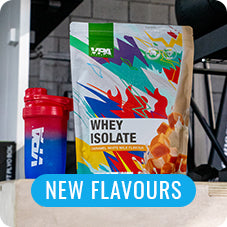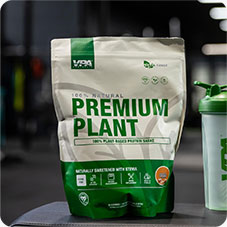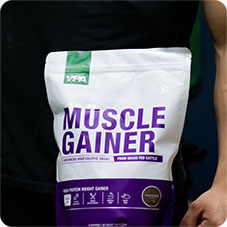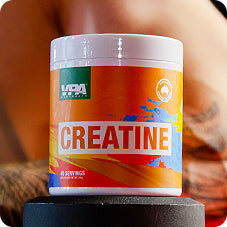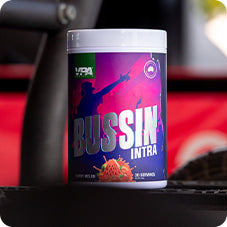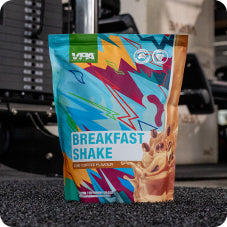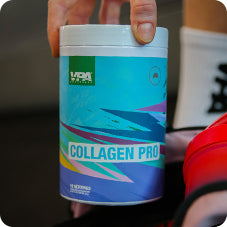Your Cart is Empty
WEIGHT CUTS FOR POWERLIFTING – A DIETITIAN’S GUIDE
January 28, 2021 9 min read

Weight cutting (also known as a water cut) is an area of powerlifting that I see not being done well on a frequent basis. Honestly, I see it as a bit of a gap in the sport where people are missing out on a massive potential advantage.
In a lot of combat sports where making weight is a requirement as well, it is at the point where almost everybody undertakes a significant weight cut. If an athlete chooses not to do one, it puts them at a noticeable disadvantage due to the difference in size and muscle mass.
Interestingly enough, even though weight cuts can provide an advantage, they haven’t become a part of the culture of powerlifting, which is why I see it as a bit of a gap.
At one end of the spectrum, there are quite a lot of people, even at the elite level who don’t do weight cuts at all. They just aim to weigh near the top end of their weight class in the weeks leading up to the weigh-in. This is leaving a massive competitive edge on the table.
There is an obvious advantage to weighing 5-10% more than your competitors if you are still able to make weight and then rehydrate and replenish yourself in time for the competition so that you have no loss of performance.
The other aspect I see is people attempting a weight cut but implementing it poorly in a way that hinders their performance.
One common mistake is attempting to cut too much weight since even if you do it as effectively as possible, there is only so much you can cut while being able to recover in time to compete without loss of performance.
The other mistake I see is people only using one main mechanism, rather than the full range of tools available.
Even the fact that a lot of people call it a “water cut” instead of a weight cut highlights this. If you are solely manipulating water and ignoring the other variables, you will not be able to get the best possible outcome.
Ideally, you want the loss of weight to come from a combination of dehydration, glycogen depletion and decreased food residue in the gut. If you implement an appropriate strategy to maximise losses from each category in the most efficient manner, you can cut more weight before it affects your performance, compared to if you overly focus on just one of those aspects.
This post is solely going to focus on making weight within the last week of the competition. It won’t cover how to drop body fat or just weight-loss in general since that is a separate topic. These strategies are solely for attempting to create a short-term competitive advantage.
How Much Can You Cut?
Firstly, I want to start out by saying WHO should do a weight cut.
- If you are new to powerlifting or are not looking to place in a high-level competition or break a record, I highly recommend you do not undertake a weight cut. Under those circumstances, I’m of the opinion that your goal should be to make the competition go as smoothly and as enjoyably as possible. Part of that process should be eating up until comp day in a fashion that will best fuel your performance so you feel as strong as possible on the day.
- If you ARE trying to break a record or place highly at a comp though, a weight cut might be a necessary part of the process. It is clearly an effective strategy when implemented well and you can lose at least 5% of your body weight within the final week prior to weigh-in without any loss of performance.
One study showed 5% weight-loss over 5 days resulted in no loss in performance with only a 4hr weigh-in. Another showed 5% weight loss over just 3 days resulted in similar outcomes with a 12hr weigh-in.
We are lucky that powerlifting often has 24hr weigh-ins, which allows a lot more time for an effective rehydration and replenishment strategy. For the sake of this article, I’m solely focusing on 24hr weigh-ins. These strategies can be utilised for shorter weigh-ins to a certain degree but would need to be scaled down accordingly since there is less time to recover prior to competition
The maximum weight cut I would recommend for somebody one week out from the competition is ~8% of their body weight. Some people are absolute freaks and can get away with up to 10%, but that isn’t the norm. My recommendation would be to start conservative the first time you try it and then be a little more aggressive if that goes well.
Hormone Manipulation
Two of the main hormones involved in regulating water balance are aldosterone and anti-diuretic hormone (ADH).
Aldosterone is released in response to decreased sodium. When you drink more water, it lowers the concentration of sodium. In response to this, aldosterone will be released to address low sodium concentration.
While aldosterone indirectly regulates water resorption through regulating sodium, ADH directly regulates water resorption.
When you consume a lot of water, you down-regulate aldosterone and ADH, which causes you to urinate more. But there is a lag effect when you stop consuming that much water before aldosterone and ADH are up-regulated again. This lag effect allows you to drop water more quickly than you otherwise could.
To put this into practical terms for somebody making weight – your intake could look like:
Monday = water intake (in litres) = body weight (in KGs) x 10%
Tuesday= water intake (in litres) = body weight (in KGs) x 10%
Wednesday= water intake (in litres) = body weight (in KGs) x 10%
Thursday = water intake (in litres) = body weight (in KGs) x 10%
Friday= water intake (in litres) = body weight (in KGs) x 1%
Saturday (weigh-in day) = nothing until weigh-in unless comfortably under the desired weight
To put it simply, this means if you consistently have a high intake of water, your high output of water will continue for a little while even after you stop taking in that high intake.
There is a similar situation with sodium. If you have a high intake of sodium for most of the week leading up to weigh-in but cut it down within the last 2-3 days prior to weigh-in you can take advantage of that lag effect as well. This will allow you to drop water weight much more effectively than you otherwise would have been able to.
Glycogen
Glycogen is the storage form of carbohydrate. It is stored in our liver and skeletal muscle. Glycogen itself has weight, but on top of that we typically also hold onto roughly 3g of water weight per gram of glycogen. To put context around that, on average a 75kg athlete can store ~500g glycogen in the liver and ~1500-3500g in the muscles.
It appears as though restricting to <50g carbs per day over the course of the week can allow a 1-2% additional drop in weight. This is important, since applying this strategy in addition to the dehydration allows you to drop more weight, without having to dehydrate as severely.
The week of weigh-in should not contain high carb foods as a general rule. It could even be appropriate to stay <30g carbs per day. This shouldn’t impact training since training is normally tapered down at this stage and the decrease in performance during any sessions won’t matter. The goal is just to be ready to go on comp day.
Food Residue
Another area where a bit of weight can be lost is through literal food weight in the gut. Eating low fibre/low residue meals in the last 2 days of a weight cut can result in the maximal amount of weight lost through the elimination of food and residual fibre in the gut. It would also be advisable to limit intake of high-volume foods that are low in calories.
Doing a weight cut is completely different from focusing on health. Vegetables are obviously good for our health for example. But during a weight cut, they are high fibre and low calorie, which mostly rules them out in large amounts for the 2 days prior to the weigh-in.
Other Strategies
Sweating can be used as a last resort if the above strategies haven’t gotten you the results needed. Passive sweating (e.g. sauna) is better than active sweating since it will fatigue you less.
Dry saunas work better than wet saunas due to promoting around 2x the rate of water loss through sweat. They are also slightly safer since they increase body temperature and heart rate less than a wet sauna. Make sure to seek appropriate guidance and utilise a safe protocol for this as well if you were to attempt to utilise it as an option.
Laxatives and diuretics are also an option (although if you are in a federation that bans substances, make sure you know what you can/can’t do) but not preferred and they aren’t tools I recommend. Often they significantly increase the chances of things going wrong in a way that can harm your performance. Sure, they can potentially be implemented well, but in my opinion, the risk to reward ratio isn’t good enough.
Piecing it Together
This table below effectively summarises how this could potentially be put together in practice.
| DAY | FOOD | WATER |
| SUNDAY | – Low carb (<30g) | Body weight (in kg) x 10% |
| MONDAY | – Low carb (<30g) | Body weight (in kg) x 10% |
| TUESDAY | – Low carb (<30g) | Body weight (in kg) x 10% |
| WEDNESDAY | – Low carb (<30g) | Body weight (in kg) x 10% |
| THURSDAY | – Low carb (<30g) | Body weight (in kg) x 10% |
| FRIDAY | – Low carb (<30g) | Body weight (in kg) x 1% |
| SATURDAY (WEIGH-IN) | – No food/drink before weigh-in | Zero before weigh-in |
Rehydration & Replenishment
The other piece of the puzzle people make mistakes with is their rehydration strategy. Most people will just down a large amount of fluid, electrolytes and food without any real plan. This is better than nothing of course, but it is sub-optimal. If you dial in your rehydration and replenishment appropriately, you will be able to cut more weight while still being able to recover in time to perform at your peak.
The specific strategy I recommend involves having multiple serves of the following on hand: 250ml protein shake (30g whey protein or equivalent) + 3g creatine, 500ml Gatorade/Powerade, 250ml Hydralyte.
Healthy kidneys can excrete almost 1L of fluid per hour on average. The focus isn’t on the amount you drink, it’s about the amount that makes it into your cells.
Based on this, combined with a few other factors, it is ideal to consume the combination of those fluids just mentioned around once per hour for the first 2-4 hours post-weigh-in, or longer if needed. Don’t chug this liquid down all at once. Sip it instead. This will allow you to absorb more and reduce the need for urination.
- I recommend removing creatine in the lead-up to weigh-in since it increases the amount of water weight the body holds onto, it is worthwhile re-introducing it in the rehydration shake for the same reasons. You won’t be able to saturate your cells in this short timeframe, but it can still help.
- Protein is included in the shake for multiple reasons. One minor factor is that it will re-elevate muscle protein synthesis, but honestly at this stage that won’t make a big difference. Another more important factor is that it can allow you to replenish glycogen quicker than carbs alone could.
- Your body can store roughly 10g glycogen per kg of LBM. Therefore, your carb intake goal over the 24hr period is roughly around that mark. I know it’s not that simple, but it is still a good guide. For an 80kg athlete at 10% body fat, this will be roughly 720g carbs as the target over the 24 hours. The highest glycogen synthesis rates have been reported at 1-1.85g/kg/hr when consumed post-exercise at 15-60 min intervals. Since carbs have been low for a while during the weight cut in addition to you not being primed for glycogen synthesis due to exercise, rates likely will be at the lower end of the spectrum.
- So ideally you want to consume 50+g carbs every 2 hours during the first part of the process. After that, ideally, you divide the rest of your target carb intake over several meals. Obviously allowing time for sleep since that is also a top priority. Don’t sacrifice sleep just to get a little more food in.
Ideally, you start with the liquids that I mentioned previously and then you switch over to solids. It’s a good idea to avoid the “eat everything in sight” strategy because:
- It’s important to stick to foods you are used to so you can limit GI upset.
- You want to keep fat relatively low. Below 0.8g/kg is ideal since otherwise, it will be difficult to meet carb needs.
- You want to focus on avoiding a dramatic increase in fibre intake.
Final Thoughts
While this isn’t individual advice, I’ve tried to make this post as insightful as I can about some of the strategies I consider under certain circumstances.
I believe part of the reason why weight cuts haven’t become more common practice yet is that people are cautious of them due to the hearing about times they have gone wrong and it has either led to poor performance (at best) or been a medical risk.
If executed safely and effectively though, they can be a tool that can give you a competitive edge that takes your powerlifting to the next level.
Disclaimer: The contents of this post are intended for informational purposes only and are not intended as individual advice. Making weight through food restriction, fluid restriction and other methods carries risks. I recommend enlisting the services of a dietitian or other healthcare specialist if you wish to undertake a weight cut.
Also in Featured

VPA x Muscle Hut
April 10, 2024 1 min read
VPA proteins and supplements are stocked at Muscle Hut. Muscle Hut is among our top wholesalers who are always fully stocked up with VPA products. Get on our wholesale program today.
Read More
VPA Australia Teams Up with Renowned Artist Tracey Keller for Limited Edition Shaker
March 12, 2024 2 min read
Discover the limited edition shaker collaboration between VPA Australia and renowned artist Tracey Keller. Shop now for this exclusive product!
Read More
The Power of the Morning Sun: A Natural Boost for Your Well-being
March 08, 2024 4 min read
Discover the health benefits of morning sunlight, including immune system boost, mood enhancement, Circadian Rhythm regulation, blood pressure reduction, and weight loss correlation. Get tips for safe sun exposure and more. Read on!
Read More Recent Articles
- VPA x Muscle Hut
- VPA Australia Teams Up with Renowned Artist Tracey Keller for Limited Edition Shaker
- The Power of the Morning Sun: A Natural Boost for Your Well-being
- Sweat Together, Stay Together: Valentine's Day Fitness Gift Ideas
- Mind & Body Reboot: Your Ultimate Detox Guide
- Building Healthy Habits: Say Goodbye to the "All or Nothing" Approach
- What are Somatic Workouts?
- Importance of Diaphragmatic Breathing
- Welcome to Caity G’s Bodybuilding Journey!
- Success with SMART goal setting



